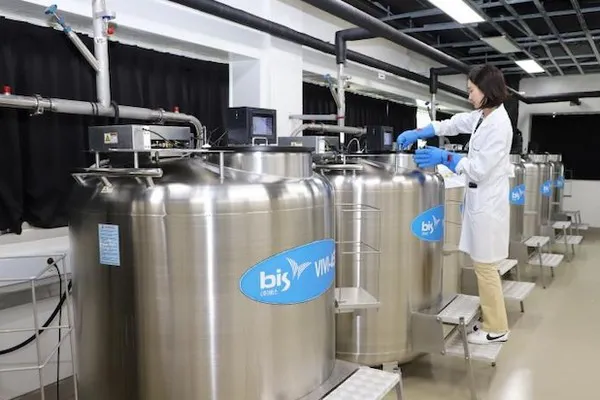The Rural Development Administration (RDA) in South Korea has unveiled a breakthrough in cryopreservation technology aimed at the long-term conservation of pear tree genetic resources. This method involves the storage of genetic material at minus 196 degrees Celsius in liquid nitrogen, effectively halting biological reactions and allowing for a high revival rate upon thawing.

Image: Rural Development Administration.
Prior efforts in gene preservation by the RDA, utilizing chemical capsules, resulted in low revival rates, limiting their application. However, this recent endeavor, a collaborative project between the National Institute of Agricultural Sciences and the National Institute of Horticultural and Herbal Science, has led to the successful freezing and revival of pear plant samples with a revival rate between 60% to 80%, well above the global benchmark of 40%.
The team also introduced a technique to enhance the rooting of cryopreserved plants in greenhouses, raising the rooting rate significantly from virtually zero to up to 87%, thereby facilitating more reliable transplantation. With the aim of protecting pear tree genetic resources from threats like pests, diseases, or climatic adversities, the RDA plans to implement these technologies starting this year. Over the past two decades, the RDA has preserved 1,837 genetic resources, including those of potatoes, garlic, and strawberries, employing cryopreservation.
Source: koreabizwire.com
